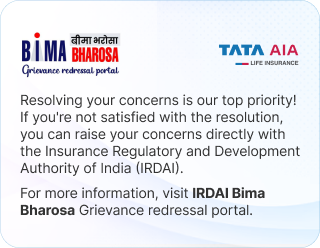24-June-2021 |
By bringing variety to your portfolio, you are diversifying your risks. However, equities, debts funds and mutual funds are not the only way to bring diversity to your portfolio. You can also subscribe to a ULIP plan to spread out investment. You should also know that some life insurance policies also offer lucrative returns and maturity benefits along with the usual coverage.
Key takeaways
Diversification is all about combining multiple asset classes and not just owning many stocks to reduce overall risk.
A balanced portfolio includes a mix of equities, debt instruments, mutual funds, insurance-linked plans, and even global investments.
Avoid over-diversification; focus on quality investments that align with your financial goals.
Review your investment portfolio regularly to ensure your investments remain on track with market changes.
5 Tips for diversifying your investment portfolio
Here are five effective tips to help you diversify your investment portfolio.
Include a ULIP in your portfolio
A ULIP (Unit Linked Insurance Plan) divides your premium into life cover and investment. You can invest in equity, debt, or balanced funds based on your risk appetite. Managed ULIPs are handled by professionals, ensuring better balance and stability. They also offer tax* benefits under Section 80C, making them a smart long-term option.
Extending the limits of investment
True diversification goes beyond equity and debt. You can include real estate, government securities, and commodities to ensure balanced growth. Real estate returns long-term value, and bonds generate steady income. Select options with prudence based on your objective and risk tolerance to maintain your portfolio stable and profitable.
Include index or mutual funds to balance the risk
Index and mutual funds diversify your investments over sectors, reducing risk. Index funds are low-cost market-indexed trackers, while mutual funds are actively managed for potentially higher returns. Having both offers balance and flexibility, allowing you to build your wealth over time independent of market conditions.
Learn about global investment opportunities
Investing abroad lessens dependence on the economy of any one nation. You can invest abroad through international mutual funds or international apps. Global diversification gives exposure to growing industries worldwide, such as technology or alternative energy. This diversifies the risk and opens up new doors for long-term expansion.
Don't over diversify
Over-diversification can complicate it to monitor your investments. Instead, invest in a balanced portfolio of quality assets aligned with your objectives. Make your portfolio simple, diversified in major types of assets, and easy to track. This allows each investment to significantly contribute to your financial progress.
How to increase portfolio value? - bonus tips
To maximise the portfolio value, you may use these tips.
Asset allocation: Add various asset classes such as equity, debt, property, and gold, depending on your risk appetite and investment objectives.
Equity diversification: Diversify investments across market capitalisation, sectors, themes, and geography to prevent high concentration in one stock.
Debt diversification: Invest in securities with varying maturity periods, such as short, medium, and long-term, to minimise risk and maximise returns.
Financial instrument diversification: Employ a combination of stocks, mutual funds, bonds, bank FDs, and gold to balance your portfolio.
Fund house diversification: Don't invest in only 1–2 mutual fund houses; diversify across 6–8 fund houses for dependability.
Benchmark diversification: Add funds investing in various benchmarks such as Nifty 50, BSE Sensex, Bank, and IT indices to represent various market segments.
Active vs passive diversification: Mix actively managed funds with passively managed index funds or ETFs for expert management and cost-effective exposure.
Investment style diversification: Mix high-growth funds with stable, value-oriented funds for a balanced performance.
Geographic diversification: Invest in domestic and global funds to diversify risk geographically and explore global stock exposure.
Investment method diversification: Blend lumpsum investments with systematic investment plans (SIPs) to take advantage of timing strategies and rupee-cost averaging.
Commodities and capital market securities: Add gold/silver funds, ETFs, and capital market instruments to hedge market volatility and inflation.
Conclusion
There are only a few things that you have to remember, and you will be ready to start investing. You should never invest all your capital in a single stock, regardless of the upside potential of the stock. Maintaining the debt and equity mix of the portfolio is also important. Lastly, you should regularly do a financial portfolio analysis to make minor tweaks to your investing style. By following the earlier mentioned steps religiously, you will be able to make a decent earning from your portfolio.











 FOR EXISTING POLICY
FOR EXISTING POLICY 
 FOR NEW POLICY
FOR NEW POLICY 








